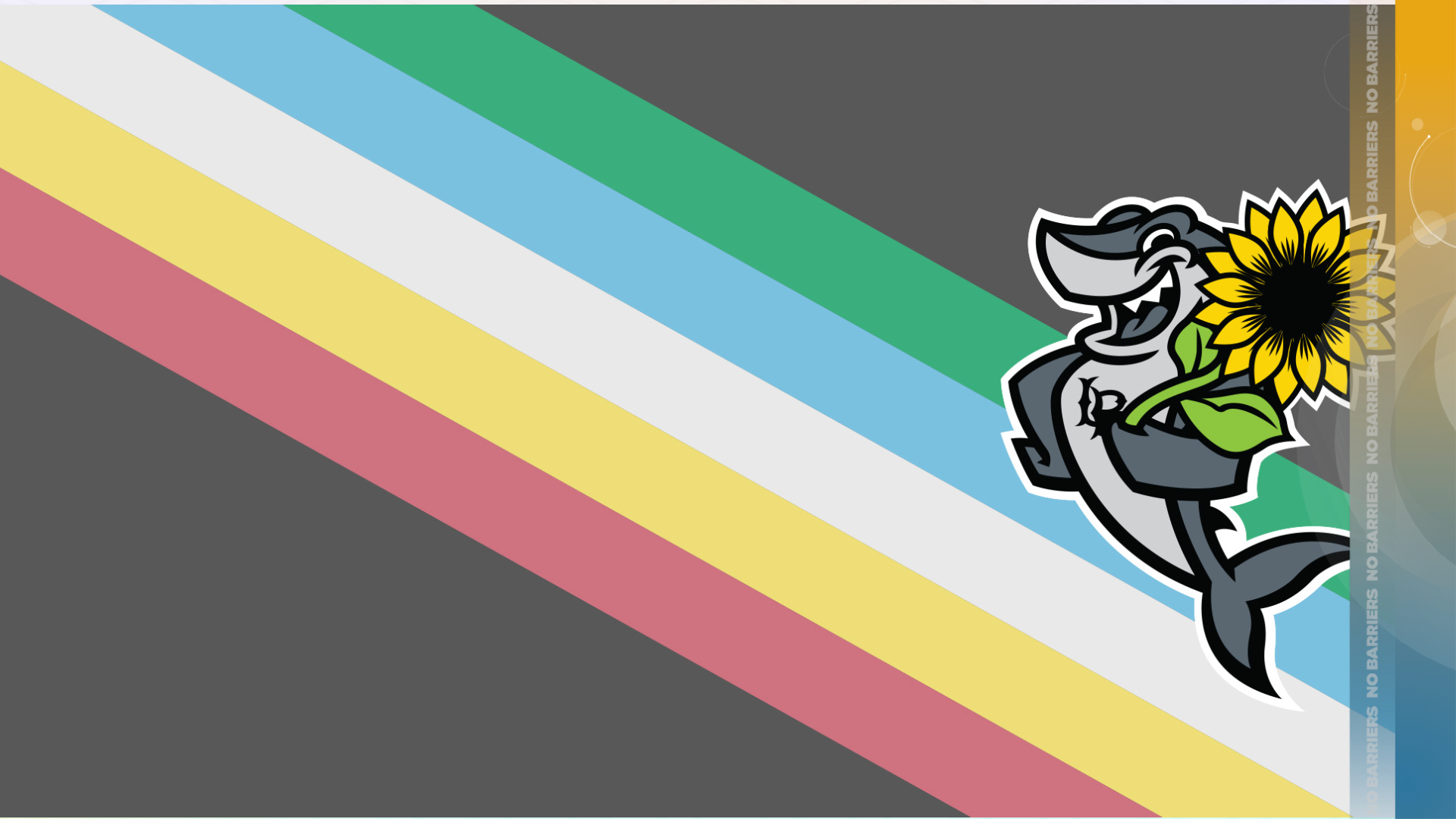Not all disabilities are physically visible at first glance. Without familiar symbols like handicapped car signs, white canes, and wheelchairs, it can be hard to recognize the challenges that people with invisible disabilities face every day.
To raise awareness of invisible disabilities, California State University, Long Beach introduced the use of the “Hidden Disability Sunflower” symbol, which allows people on campus to voluntarily share that they have an invisible disability or condition.
Elby displays sunflowers, which have been adopted as a symbol of invisible disabilities.
In celebration of Disability Pride Month in July, The Beach will be showcasing Elvie holding a Hidden Disability Sunflower, which will let staff and students know that someone may have a disability and that understanding, inclusion and support can help.
One way to demonstrate inclusivity is to listen to what individuals need in the moment, including embracing their different abilities and providing a safe space for them to spend more time together.
During Disability Pride Month and the first few weeks of the semester, the University Bookstore will add “Hidden Disabilities Sunflower” to its Elvie offerings for faculty, staff and students who want to represent invisible disabilities or stand in solidarity as an ally of ability.
Mary Nguyen, director of the Bob Murphy Access Center, said she hopes introducing Elvie and the Hidden Disability Sunflower will be a “positive way for students to share with others that they may have an invisible disability and create a space to have a conversation about how they can best be supported.”
For example, students are most empowered when they can communicate to faculty and classmates that they have an invisible disability and have access to audio recordings of class discussions so they can replay and review them in their own environment and at their own pace, she added.
Providing a barrier-free college experience is the core mission of the Bob Murphy Access Center (BMAC). More than 12,500 students with disabilities have benefited from BMAC’s services, empowering them to build purposeful lives on the paths they choose. It is one of the priorities of CSULB’s comprehensive fundraising campaign, “No Barriers.”
Donor Summer Temple said BMAC provides more than services for students with disabilities, faculty, staff and students’ parents.
“I feel like this is a place that gives parents like me hope that there is a future for our children,” said Temple, a mother of a 10-year-old son with autism.
“They deal with a lot there, which is great, and they cater to a variety of disabilities — hearing impairments, visual impairments, neurodevelopmental disabilities, physical disabilities. They’re really trying to help all students. And, like I said, what are they going to do for faculty that are not trained or equipped?”
Here are some facts about hidden disorders:
A global issue
More than 1.3 billion people worldwide, and 1 in 4 Americans, live with both visible and invisible disabilities. Invisible disabilities include chronic illnesses such as respiratory disease, arthritis, and diabetes. Other invisible disabilities include dyslexia and ADHD.
More than you know
According to the National Center for Education Statistics, the number of students ages 3-21 who received special education and/or related services under the Individuals with Disabilities Education Act (IDEA) in 2021 was 7.3 million, representing 15% of public school students. The most common disability category was specific learning disabilities (32%). At CSULB, the highest percentage of disability categories were psychological/mental disabilities.
Invisible
Many disabilities are neurological, such as autism, ADHD, mental illness, and other invisible conditions. Some disabilities are more invisible. Hidden Disabilities Sunflower is designed to reduce stigma and help others understand that there may be people with invisible disabilities.
Uniquely Different
There are many people who identify as having the same disability diagnosis. It may be easy to assume that everyone experiences the same challenges. However, it is important to realize that everyone is different. One person’s experience of disability may be different from another person’s experience of disability. This is because disabilities can be understood to fall on a spectrum from mild to severe.
Hiding the Disability
People with autism often use rocking, hand flapping, or repetitive vocalizations to express emotion or to calm themselves. Many people with autism are actively encouraged to suppress these behaviors and act more “neurotypically.” This is called masking. Masking is a way for autistic people to hide their autism. However, masking can be tiring and draining for autistic people, making social interactions difficult.
Additional Help
Service dogs are perhaps best known for their role as guide dogs for people with visual impairments, but they are also highly trained to help diabetics detect spikes and drops in blood sugar levels. Additionally, emotional support animals can be a therapeutic option for people with mental health issues.
I didn’t mean to say that, but…
It is important to use appropriate language when speaking with people with disabilities. People with disabilities prefer the terms “disabled” or “people with disabilities.” The use of the word “handicap” is no longer appropriate as it comes from a time when people with disabilities were marginalized and not integrated into society. Using “disabled” references the inspiring work done during the disability civil rights and social justice movement and allows for embracing their different abilities while recognizing people first. Newer terms often used when referring to people with disabilities include differently abled, diverse, and determined.
Famous people who have embraced their disability identities
Many celebrities know the struggle of living with a hidden disability. Did you know that Selena Gomez has lupus, Demi Lovato has bipolar disorder, Lady Gaga has fibromyalgia, a chronic disease that causes pain throughout the body? Also, singer Nick Jonas was diagnosed with type 1 diabetes at age 13, rapper Lil Wayne has epilepsy, and Governor Gavin Newsom has dyslexia.

